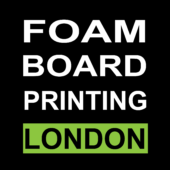Creating a model plane from foam board is a fun and rewarding project that combines creativity and engineering skills. Foam board, also known as foam core, is lightweight, easy to cut, and widely available, making it an ideal material for crafting models. In this article, we will guide you step-by-step through the process of making your own foam board plane.
Materials Needed
Before you start, gather the following materials:
- Foam board: Available at craft stores, typically in 20” x 30” sheets.
- Utility knife or craft knife: For cutting the foam board.
- Ruler or straightedge: To ensure straight cuts.
- Pencil: For marking measurements on the foam board.
- Hot glue gun and glue sticks: For assembling the parts.
- Cutting mat: To protect your work surface.
- Decorative materials (optional): Markers, paint, stickers, etc., for customization.
Step 1: Design Your Plane
Start by sketching your plane design. Consider whether you want to make a simple glider or a more complex model with wings and a tail. Keep in mind the size of the foam board, as larger designs may require more materials.
A basic design should include:
- Wings: Two main wings and possibly horizontal and vertical stabilizers.
- Fuselage: The main body of the plane.
- Tail: Typically consists of a horizontal stabilizer and a vertical fin.
Step 2: Measure and Cut
Using your ruler and pencil, mark out the dimensions for each part of your plane on the foam board. Here’s a simple guideline for a basic foam board plane:
- Wings: A rectangular shape approximately 12” wide and 4” tall.
- Fuselage: A rectangle about 8” long and 3” wide.
- Tail: Two smaller rectangles for the horizontal stabilizer (4” x 2”) and vertical fin (2” x 3”).
Once you have marked the dimensions, carefully use your utility knife to cut out each piece. Be sure to make straight cuts and apply even pressure for a clean edge.
Step 3: Assemble the Plane
After cutting out all the parts, it’s time to assemble them. Start with the fuselage by gluing the wings on either side. Use a hot glue gun for strong bonds, but be careful of the glue as it can get very hot. Hold the wings in place for a few seconds until the glue sets.
Next, attach the horizontal stabilizer to the back of the fuselage. Finally, glue the vertical fin on top of the horizontal stabilizer. Make sure everything is aligned properly for stability.
Step 4: Add Details
Now that your plane is assembled, it’s time to personalize it. Use markers or paint to decorate your plane. You can add details like windows, stripes, or even stickers for a unique touch. If you want to go a step further, consider adding a cockpit with a pilot figure or embellishing the wings with additional designs.
Step 5: Test Flight
Once the glue has dried completely, it’s time to test your plane. Find an open area and give it a gentle toss. Adjust the wings or tail if necessary to achieve better flight. You can also experiment with different wing shapes and sizes to see how they affect flight performance.
Conclusion
Making a plane out of foam board is a fantastic way to explore creativity while learning about basic aerodynamics. This project not only encourages hands-on skills but also provides a sense of accomplishment upon completion. Whether you’re creating a simple glider or a more intricate model, the possibilities are endless. So gather your materials, follow these steps, and enjoy the exciting world of foam board aviation!
